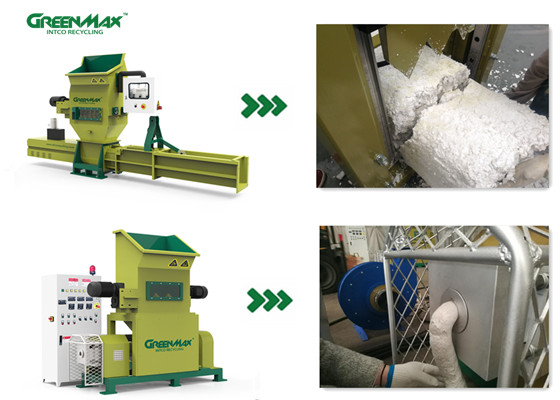EPS foam is a non-degradable “white pollution”
with a density of only about 20 kilograms per cubic meter, which pollutes the
environment when abandoned in landfills, or in another case, will be in
polystyrene Recycled EPS foam comes back to life and serves our lives as a new
source. In the following introduction, a four-step quick guide will give you a
better understanding of EPS foam recycling.
Foam loose waste
As the name suggests, the EPS foam Collection collects No.
6 foam waste from all the different sources back to the recycling center, where
it can be compacted. You can leave your waste foam at the recycling center’s
designated location and comply with its guidelines, as it is collected in bulk.
Generally, recycling centers only accept white and clean EPS foam for
recycling, so you should filter out any non-white EPS foam and remove the tape
or sticker. After that, all you have to do is wait for their monthly or
quarterly service calls.
EPS foam Compression
After the collection is completed, when a certain amount of
waste EPS foam has accumulated, the recycling center will proceed to the next
step of compaction. Of course, this process is based on the fact that they have
a reduction machine like foam compactor, in other words, anyone who has it can
use it. The broad significance of EPS foam compaction is to reduce volume,
paving the way for storage, transportation, granulation and reuse. The loose
and bulky EPS foam can be compacted after being processed by a foam compactor,
cold-pressed or hot-melted. Also, compacted EPS foam will be easier and more
efficient to pelletize than loose foam.
EPS foam particles
Recyclers themselves or foam
end users often buy back compacted EPS foam blocks and ingots and regenerate
and granulate them through a granulation process, the most widely used material
in the pharmaceutical industry to make tablets. technology used. The methods
include particle formation, including microencapsulation, multiparticulate
systems for improved release mechanisms, and the like. EPS foam granulation
technology involves the addition of a liquid binder to an aqueous foam base.
During the granulation of EPS foam, a binder in aqueous form is added.
Reuse of EPS foam
Through a well-established pelletizing
process, the EPS foam pellets are shipped to the manufacturer, where EPS foam
can be made into many of the items we use in and around our homes every day.
For example, picture frames, in-house molding, pony bags, pens, rulers, foam
insulation and bubble wrap, etc. These everyday items are made of EPS foam. Based
on your understanding of these four steps, are you more interested in joining
GreenMax for recycling EPS foam and a greener planet?


